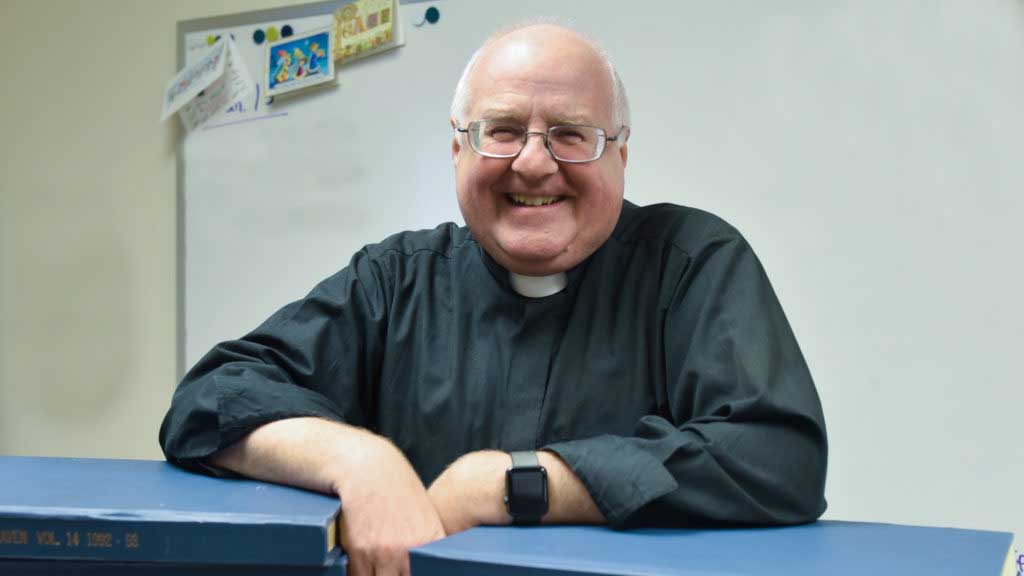
by Father Mark Goldasich
The older I get, the more appreciative I become of my family. Growing up, I assumed that everyone had loving parents and a stable home where the necessities of life — like faith, food, education and medical care — were provided for.
Obviously, that’s not the case, as I’ve learned over the years and as recent articles in The Leaven about foster care clearly show.
Sadly, the plight of children in need is not a new one in our country. A few weeks ago, I visited the National Orphan Train Complex in Concordia (orphantraindepot.org). I suspect that many people are unaware of what the “orphan train” was or that this gem of a museum is found here in Kansas.
First, here’s a little history lesson. Around the year 1830, the problem of homeless children exploded in large cities in the East. For example, the population of New York City by 1850 was about a half a million. Of those, about 10,000 to 30,000 children lived on the streets or were housed in overcrowded orphanages. These kids sold rags or matches to survive, while others engaged in prostitution or became thieves or pickpockets. At night, they slept on sidewalk steam grates or under bridges.
A minister and social reformer named Charles Loring Brace was so disturbed by this situation that he founded the Children’s Aid Society in 1853 to help children who were orphaned, half-orphaned or abandoned. He came up with the idea to rehome children from the slums of New York City to “goodhearted families in small towns and on farms [that] would take the children, educate them and see that they had a religious upbringing.” This became “the largest children’s migration in history,” according to Andrea Warren in her book, “We Rode the Orphan Trains.”
From 1854-1930, about 250,000 children rode those trains, with some 4100 children settling here in Kansas. Unfortunately, the children were not usually informed about what exactly was happening to them. Many, believing the train ride was an adventure, were simply excited to receive two sets of new clothes (one for the train ride and one to be changed into when meeting their new families) and a Bible. Agents from the Children’s Aid Society traveled with the kids to provide food, medicines and emotional support.
In 1869, the Sisters of Charity of New York got involved. Sister Mary Irene Fitzgibbon and two other Sisters created the Foundling Hospital in New York City, where they cared for abandoned infants and toddlers. The Sisters “put a cradle in a protected area near the front door where infants could be left.” Some people provided no information about the child, while others wrote emotional notes such as: “It is a heartbroken mother who is compelled to surrender her child through misfortune.” And “My wife, its mother, is dead. Do the very best you can do for my little one.” The Sisters placed their charges aboard “mercy trains” to live with Catholic families across the country.
The Concordia museum has a short film to introduce visitors to the story of the orphan trains. Afterwards, people can check out scores of photos, stories and artifacts of kids who rode those trains. There is even a refurbished rail car on-site to simulate what the children experienced.
Naturally, not every child found a happy home, but the majority of placements worked out well. Warren’s book summarizes well the rationale behind the orphan trains: “Officials knew that the placing out program was imperfect and did what they could to screen out inappropriate families. But in spite of problems, placing out provided the best chance many of the children had of finding a home.”
This day trip is a worthwhile stop . . . especially if you’ve been taking your family for granted.


